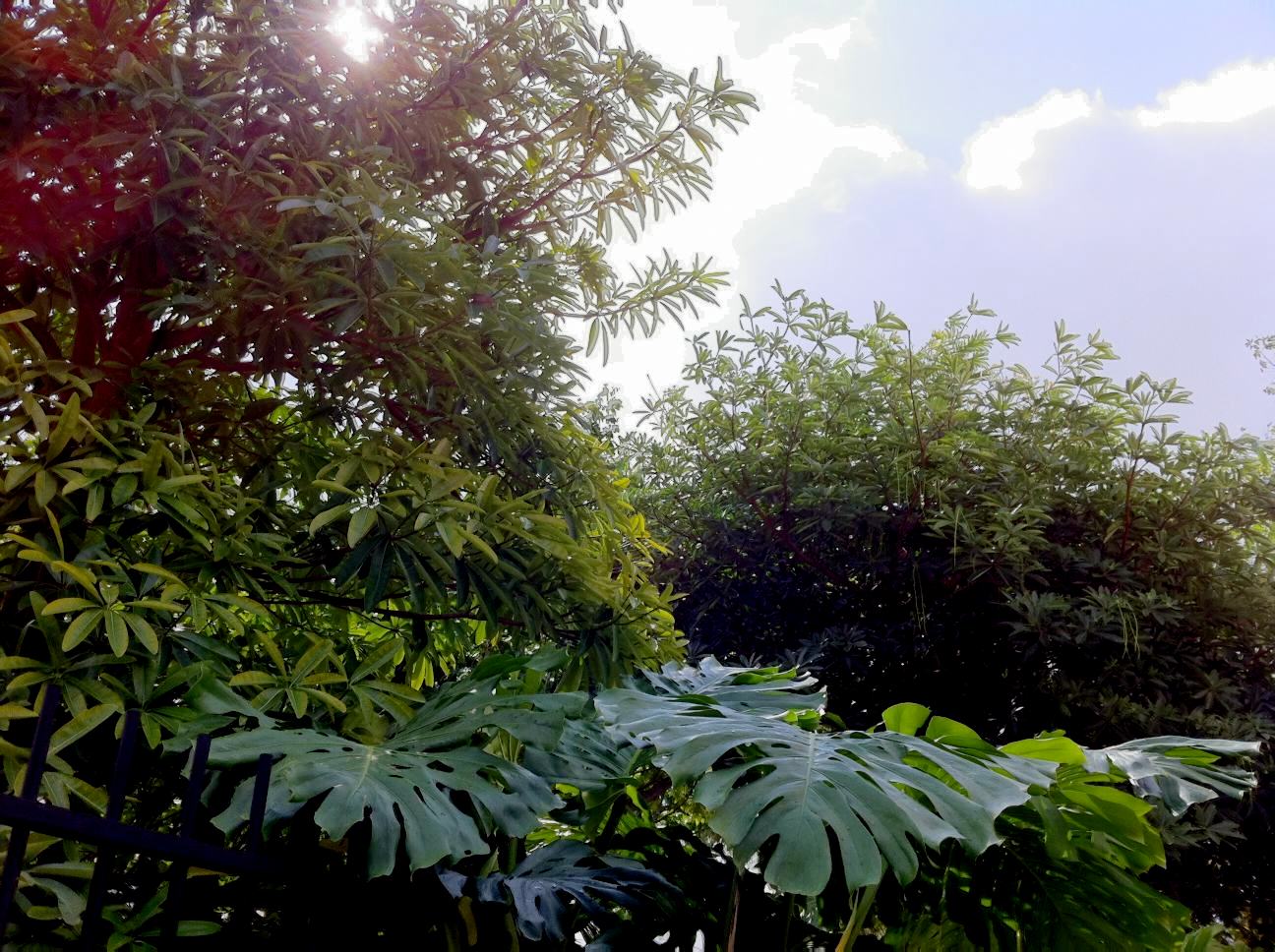A. scholaris III and IV
I felt the urge to check on the Alstonia scholaris trees in the Fairchild Tropical Botanic Garden (FTBG) and returned, probably a week or two too late. The seed pods have all but gone on both trees. However, the ground around the bigger tree is a fertile place for a seed hunt. If you know what to look for, and that is tiny brown grain sized seeds with furry hair at both ends, you can find them. I got a handful and they are now safely awaiting germination under a well drained moist soil, about 5mm deep. If all goes well, small baby A. scholaris will emerge in about 3 weeks. I am determined to grow an A. scholaris, and it will be done.
On this trip to FTBG, I found two more Dita bark trees at the entrance of the garden! I may be the only person in Miami who knows that there are four A. scholaris here. Obsession does pay off, don't you agree? This shot is taken at about 10 AM and you can see that the tree to the right still has long seed pods. The one on the left is adjacent to the fence and the scent of its flowers at midnight should be pervading this area in October. The beautiful broad leaves in the foreground are that of the Monstera deliciosa, a creeping vine native to tropical rainforests of southern Mexico south to Colombia. This plant has long corn-like fruits that, when ripe, taste like a cross between banana and pineapple. I had Monstera deliciosa living on my oak trees and I used to eat their fruits one row at a time: delicious!



No comments:
Post a Comment